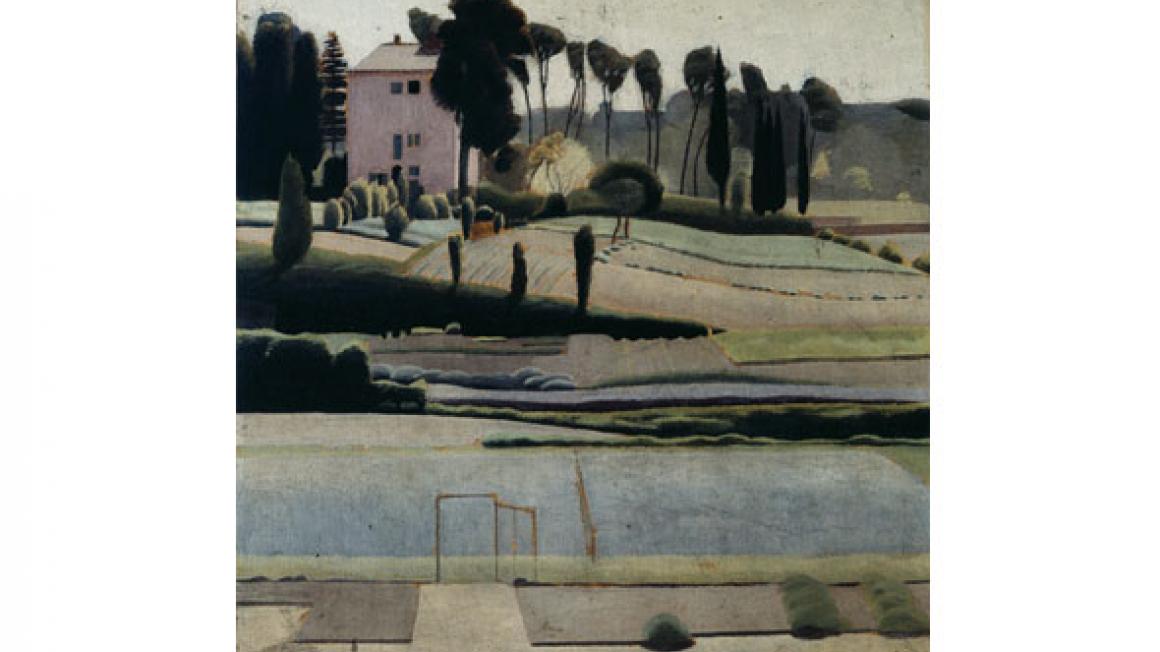Winifred Knights
 It was not easy or common for a woman to be a professional artist at the beginning of the 20th century. Their role, in public at least, was as a muse, model or mother. Winifred Knights – not to be confused with the other two prominent female painters of the period, Laura Knight and Winifred Nicholson – was an artist who was determined to make a serious career in painting. She trained at the Slade under Henry Tonks, won the Summer Prize there in 1919 and the following year became the first woman in England to win the prestigious Decorative Painting Scholarship awarded by the British School at Rome with her critically acclaimed painting The Deluge. To call someone a decorative painter can be damning with faint praise, but for Knights the description was a badge of honour. A lover of Renaissance Italian murals, she thought of decorative art as public art – to inform and educate. This is the first solo show of Winifred Knights ever mounted and all her major paintings have been brought together.
It was not easy or common for a woman to be a professional artist at the beginning of the 20th century. Their role, in public at least, was as a muse, model or mother. Winifred Knights – not to be confused with the other two prominent female painters of the period, Laura Knight and Winifred Nicholson – was an artist who was determined to make a serious career in painting. She trained at the Slade under Henry Tonks, won the Summer Prize there in 1919 and the following year became the first woman in England to win the prestigious Decorative Painting Scholarship awarded by the British School at Rome with her critically acclaimed painting The Deluge. To call someone a decorative painter can be damning with faint praise, but for Knights the description was a badge of honour. A lover of Renaissance Italian murals, she thought of decorative art as public art – to inform and educate. This is the first solo show of Winifred Knights ever mounted and all her major paintings have been brought together.The first room shows her exquisite drawings of women including some self-portraits.
The next rooms are predominately taken up by Biblical scenes, The Marriage At Cana and The Deluge, which is very similar in style to the work of Stanley Spencer. The figures are in modern dress but the style is heavily influenced by Renaissance artists Piero della Francesca and Domenico Ghirlandaio respectively. As an ardent socialist and campaigner for women’s rights she painted A Scene In A Village Street, With Mill Hands Conversing and other similar works. She portrays herself and family members in many of the pictures, often as peasants or struggling workers. This striking woman designed and wore her working clothes based on what peasants wore – a look that would be very wearable and fashionable today.
The best parts of the show are the portraits. Knights draws women naked and clothed in the style of Holbein, not as etiolated or sexual creatures, but as natural, modern, real women.
I find some of these political and some of the Biblical works a bit lifeless. However, Knights was not interested in geographical accuracy – composition and story were her priorities. Fine detail of clothing is pared down so as not to distract from the whole tableau.
This show gives respect to a remarkable woman, offered in excess of £3,000 for paintings in her lifetime, who has been wrongly overlooked.
Until 18 September at the Dulwich Picture Gallery, London SE21: 020-8693 5254, www. dulwichpicturegallery.org.uk


